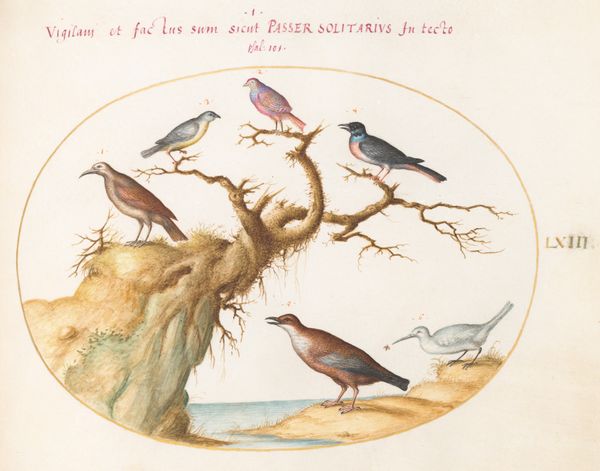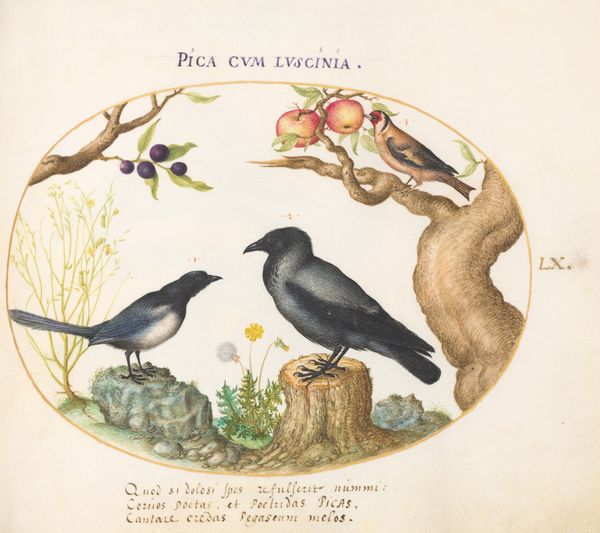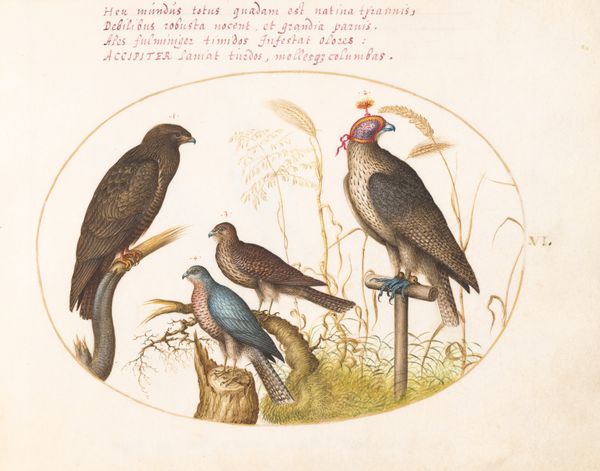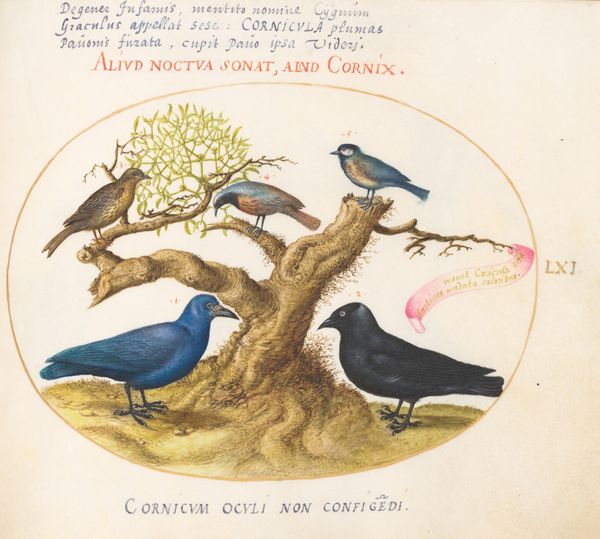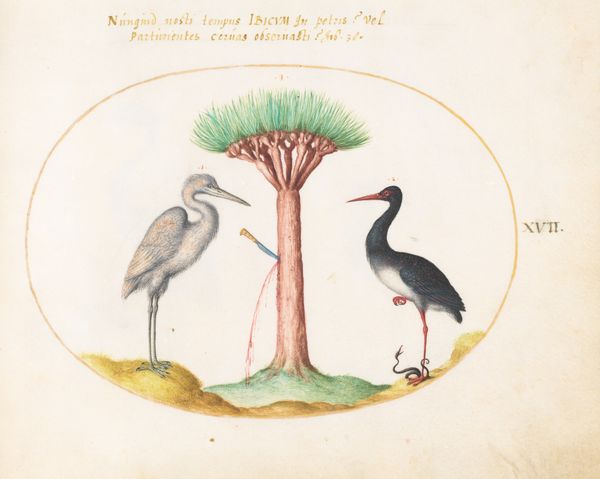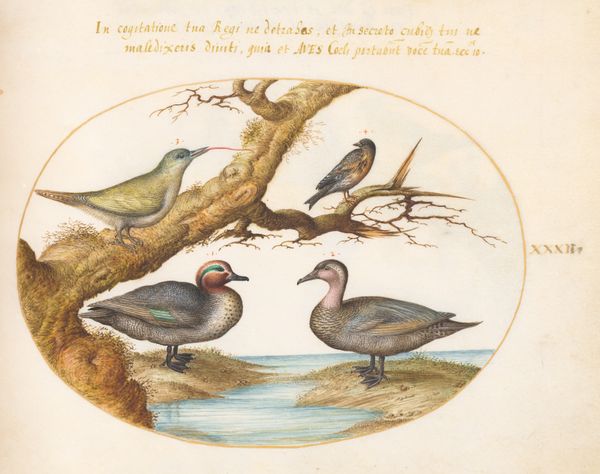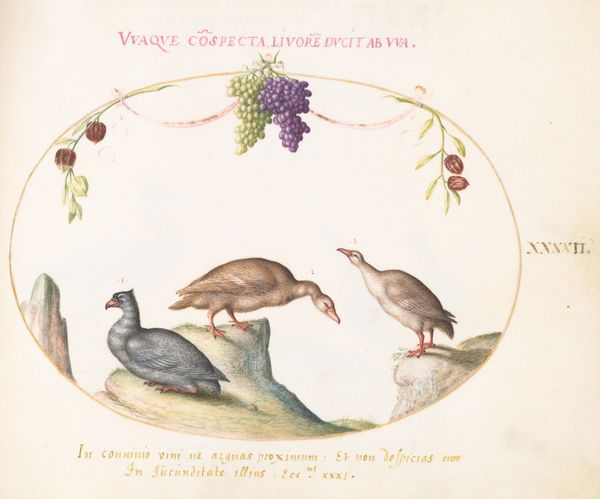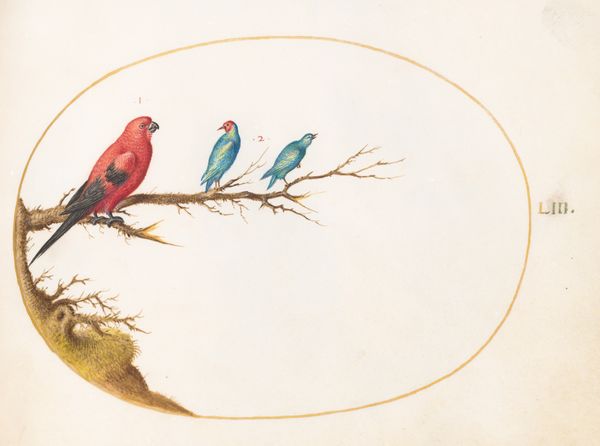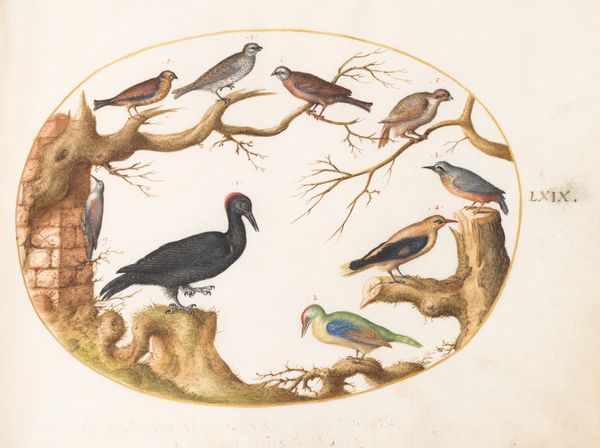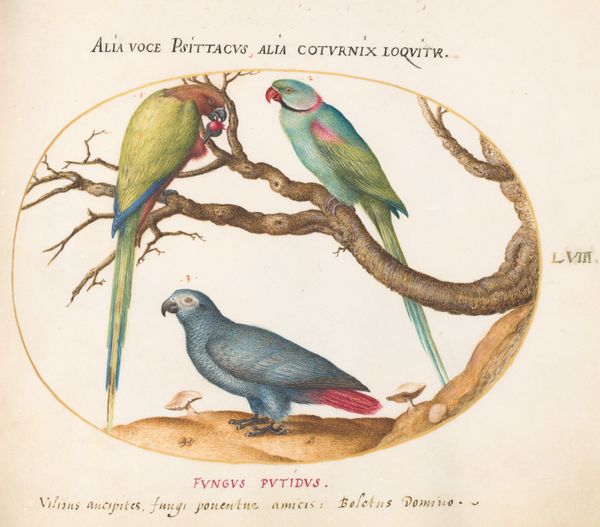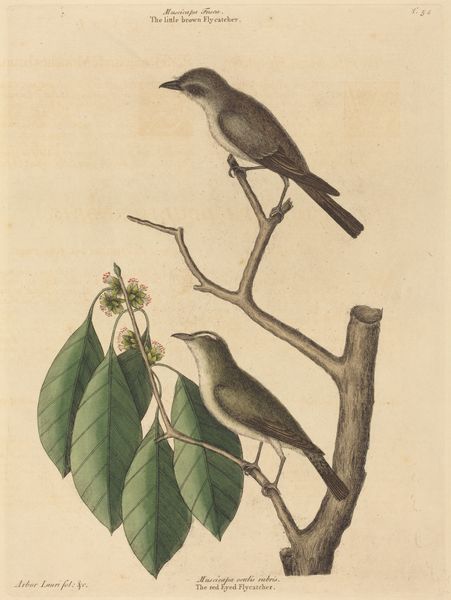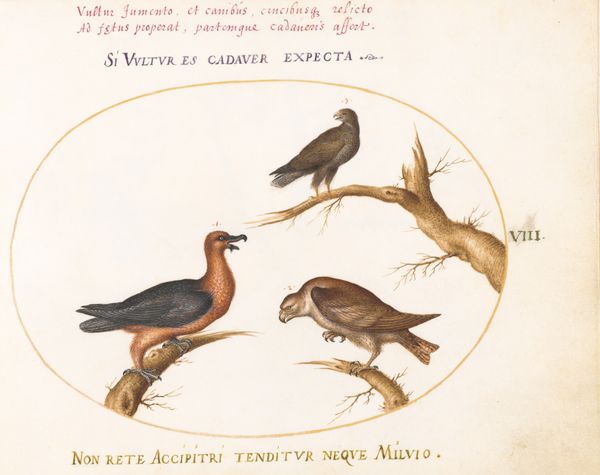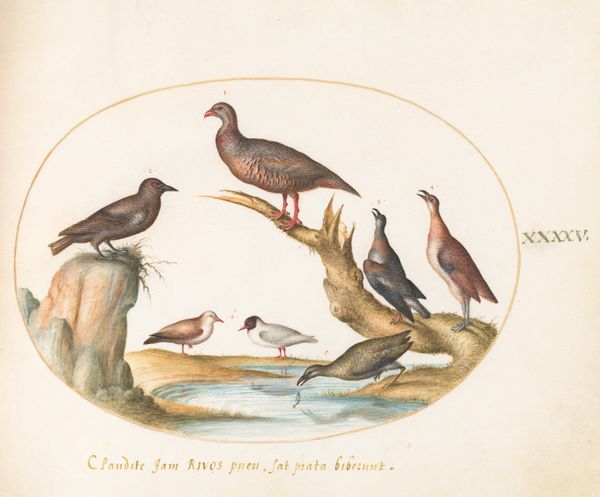
Plate 25: Great Spotted Woodpecker, Bullfinches, Sparrows, and Other Birds c. 1575 - 1580
0:00
0:00
drawing, watercolor
#
portrait
#
drawing
#
botanical illustration
#
11_renaissance
#
watercolor
#
botanical drawing
#
watercolour illustration
#
botanical art
#
watercolor
Dimensions: page size (approximate): 14.3 x 18.4 cm (5 5/8 x 7 1/4 in.)
Copyright: National Gallery of Art: CC0 1.0
Curator: Today, we're looking at Plate 25, a botanical drawing of various birds made with watercolor and ink by Joris Hoefnagel, around 1575 to 1580. It depicts a great spotted woodpecker, bullfinches, sparrows, and other birds perched on delicate branches, all within an oval frame. Editor: You know, the first thing that strikes me is how incredibly charming it is. These little birds just hanging out, they seem so lifelike despite the sort of formal, almost scientific arrangement. I almost expect to hear them chirping! Curator: It's fascinating how Hoefnagel combines scientific accuracy with artistic flair. These weren't just pretty pictures; they were crucial records for naturalists. This botanical style reflects the intense period of exploration of the natural world at the time, linked directly to European colonial expansion. How plants and animals came to be categorized speaks to the relationship of knowledge to power. Editor: Colonial expansion...right, hard to forget that, isn't it? But there’s a genuine delight in observing these birds too. It makes me want to pull out my binoculars and spend an afternoon birdwatching! I see such playful detail, from the slight tilt of a bullfinch's head to the way the sparrow's claws grip the branch. Curator: Yes, the meticulous attention is remarkable. Consider the way Hoefnagel captures the textures of the feathers using watercolour, with such precision that distinguishes one bird from the next. And look above - the Latin text inscribed adds another layer. 'Omnibus est ulsciscendi sua damna cupido. Sed nimium faciles, et credula turba volucres'- that translates roughly to "Everyone wants to avenge their losses, but the birds are easily deceived, credulous group of fowl," adding perhaps a comment on human folly. Editor: Hmm. Darker meanings afoot, perhaps? I still find a sense of lightness, of simply observing the sheer variety and vibrancy of nature, maybe before things got too messed up! Like a moment of fleeting beauty, quickly sketched... and poof. Curator: I think what resonates today is Hoefnagel’s understanding of natural systems and how human intention mediates its presentation to us. These depictions prompt necessary reflections on our place in the environment and the nature of power. Editor: Absolutely. Next time I see a woodpecker, I will certainly think of Hoefnagel, art, and historical entanglements. Birds in art are never just about the birds, are they?
Comments
No comments
Be the first to comment and join the conversation on the ultimate creative platform.
